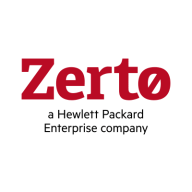

Zerto and AWS Elastic Disaster Recovery are two leading products in the disaster recovery space. AWS Elastic Disaster Recovery appears to have the upper hand due to its seamless integration with AWS services and scalability.
Features: Users value Zerto's continuous data protection, easy failover process, and robust disaster recovery solutions. AWS Elastic Disaster Recovery is praised for its seamless integration with AWS services, cost-effective scaling options, and feature-rich environment, especially for businesses using other AWS services.
Room for Improvement: Zerto users suggest improvements in user training, enhanced analytics capabilities, and end-user experience enhancements. AWS Elastic Disaster Recovery users recommend better documentation, more intuitive configuration processes, and straightforward deployment procedures.
Ease of Deployment and Customer Service: Zerto is noted for its straightforward deployment model and responsive customer service. AWS Elastic Disaster Recovery’s deployment is praised for integration ease, but may require more initial setup expertise. Zerto offers better hands-on support, whereas AWS Elastic Disaster Recovery benefits users familiar with AWS infrastructure.
Pricing and ROI: Users report Zerto has higher upfront setup costs but is cost-effective in the long term with good ROI. AWS Elastic Disaster Recovery users find the pricing model flexible with significant ROI due to its pay-as-you-go structure.
However, with AWS Elastic Disaster Recovery Service being a native service, integration is seamless, highlighting the return on investment.
Before, it was a huge cost. It was several thousand dollars to do a DR test, whereas now, I click a button.
The return on investment is evident, as Zerto saves more than 60 percent of time in various operations compared to the previous manual processes.
Most people like me hope we never have to use it. It is like insurance.
In case of any issue, they are ready to provide support within the defined SLA timeline.
I have never had an issue that was not resolved, and I have never been in a situation where they did not respond.
I would give them a rating of ten because it represents the highest level of support based on the technical knowledge of the support team, response time, and effectiveness of the provided resolutions.
We receive support around the clock, which is excellent.
I would rate it a ten out of ten for scalability.
Customers need to follow good engineering practices for optimal product use.
By adding more hosts and installing VRAs on each, tasks can be efficiently managed.
It is very good and very reliable.
AWS is not difficult, but the cost associated with replicating data to another region can be significant.
I promptly delete the malfunctioning elements and set them up again to resume replication, ensuring stability.
The ease of use was so good with Zerto that they were able to migrate things much quicker.
I consulted with tech support, and we determined the solution was to move the main workload to a resource-available ESX box.
This would detail user activity directly in the ACL console for easier debugging and auditing.
In AWS Disaster Recovery Service, these details are not available, making it difficult to check my replication status.
If I have 350 objects that I am protecting, I would like Zerto to be able to fire them up in one order, rather than having to manually bring them up in a sequence.
To increase accessibility for small and medium businesses, Zerto should consider a competitive pricing strategy, possibly including subscription-based licensing options.
The main issue with Zerto is its user interface, which lacks flexibility and presents a steep learning curve.
If you want a good-quality tool that is robust and does a good job for you, you have to pay a higher price to get that, and Zerto is no different.
However, it can become quite expensive when you start looking at the number of workloads you have in the environment and what you would like to do.
Zerto is easier to set up and use, and it's less expensive.
AWS Elastic Disaster Recovery Service is a native service, integration is seamless.
Zerto offers excellent technical support with responsive and helpful experts.
If we were attacked, I could revert to a backup from five seconds before the attack, and no one would know we were attacked.
The replication time and the minor amount of time it takes to sync a new server outside of any of my huge 40-terabyte boxes is ridiculously quick.


CloudEndure Disaster Recovery enables real-time replication and rapid recovery to enhance organizational resilience. Key features include block-level data replication, ease of use, cost-effectiveness, and automated recovery orchestration. Users benefit from increased efficiency, improved workflows, and enhanced data management, significantly improving organizational performance and business continuity.
Zerto is used for disaster recovery, business continuity, data migration, and ransomware recovery, providing continuous data protection and near real-time replication. Valued for ease of use, efficient failover processes, and versatile integration, it enhances organizational efficiency, reduces errors, and boosts productivity.
We monitor all Disaster Recovery (DR) Software reviews to prevent fraudulent reviews and keep review quality high. We do not post reviews by company employees or direct competitors. We validate each review for authenticity via cross-reference with LinkedIn, and personal follow-up with the reviewer when necessary.